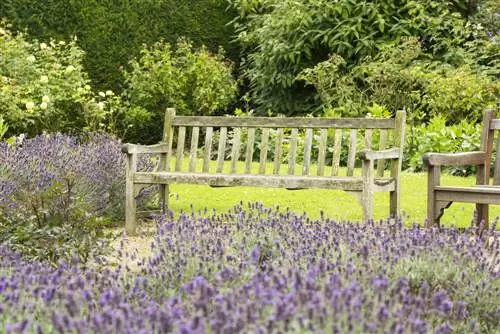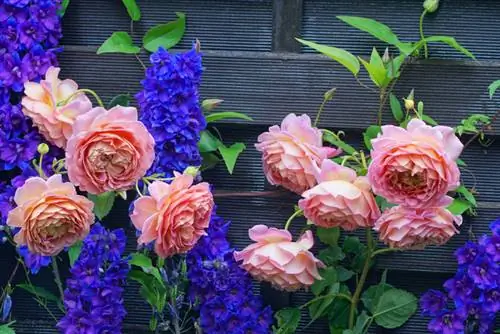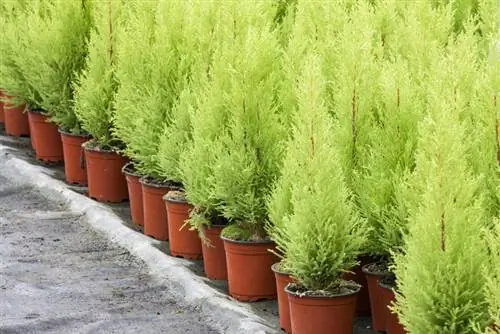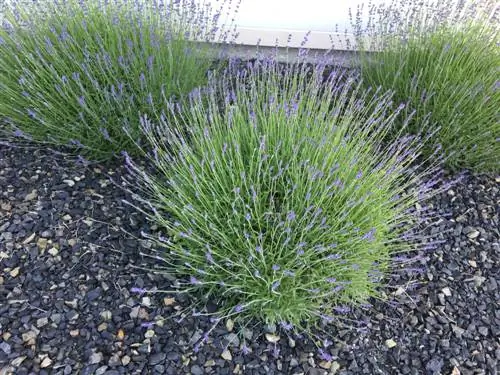- Author admin [email protected].
- Public 2023-12-16 16:46.
- Last modified 2025-01-23 11:21.
Many Mediterranean plants have long been native to German gardens. They enchant with their colorful flowers and often also their striking foliage. These perennials are real sun worshipers, thrive on poor soils and generally do not require much care. Some species only need light protection in winter.
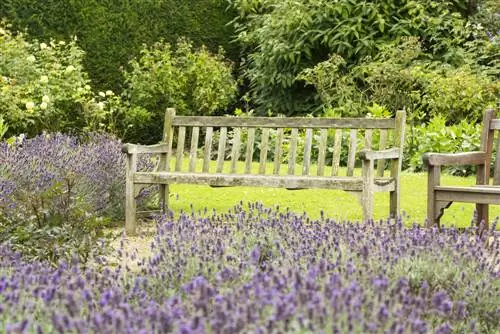
Which plants are suitable for a Mediterranean flower bed?
A Mediterranean flower bed contains magnificent flowering plants such as torch lily, Mediterranean spurge and giant allium, surrounded by filler and cushioning perennials such as lavender, coneflower and storksbill. Care requires little water and fertilizer as well as a dry, sunny location.
The most beautiful perennials for the Mediterranean garden
Even if the selection is large and you don't really want to decide, you should still carefully plan and compose the planting of the Mediterranean flower bed. The focus is on so-called leading perennials, which are effectively framed by filler and cushion plants. The heart of every Mediterranean flower bed can be magnificent flowering plants like these:
- Torch lily (Kniphofia): also rocket flower, showy flower candles
- Mediterranean spurge (Euphorbia characias ssp. wulfenii): impressive perennial with bright yellow flowers
- Giant allium (Allium giganteum): showy purple flower balls
- Filamentous palm lily (Yucca filamentosa): inflorescences up to two meters high with flowers similar to lily of the valley
- mullein (Verbascum): stately perennial with yellow flowers
- Donkey thistle or wool thistle (Onopordum acanthium): very pretty, lush-growing perennial with purple flowers
Filler and cushion perennials are smaller than the main perennials and are intended to frame or frame them, highlight their colors and shapes and leave a harmonious overall impression. Types such as:are particularly suitable for the Mediterranean flower bed.
- Lavender (Lavandula)
- Coneflower (Echinacea)
- Coneflower (Rudbeckia)
- Sun Bride (Helenium)
- Cockade flower (Gaillardia)
- Daylilies (Hemerocallis)
- Large-flowered girl's eye (Coreopsis grandiflora)
- Evening primrose (Oenothera fruticosa)
- Magnificent Cranesbill (Geranium x magnificium)
- Peony (Paeonia)
- Musk mallow (Malva moschata)
- Oriental poppies (Papaver orientale)
- Wollziest (Stachys byzantina)
- Midday flowers / hardy ice flowers (Delosperma)
- Blue cushion (Aubrieta)
- Sunflower (Helianthemum)
- Herbs such as sage, thyme, oregano
Care for Mediterranean perennials properly
Basically, Mediterranean perennials do not require much care and get along very well without regular doses of water and fertilizers. Most of these species are used to poor, dry soils and should be cultivated on such soils. They are also extremely sun worshipers and thrive best in full sun. In order for the plants to feel comfortable, they need dry, sandy and lean soil - heavier soils should be thinned out accordingly before planting and provided with drainage - in a sunny, warm and protected location. Before winter, you should cover the ground with leaves and brushwood to protect against frost and, if necessary, pack up sensitive perennials.
Tip
Mediterranean perennials are also ideal for growing in a stone or gravel bed.

